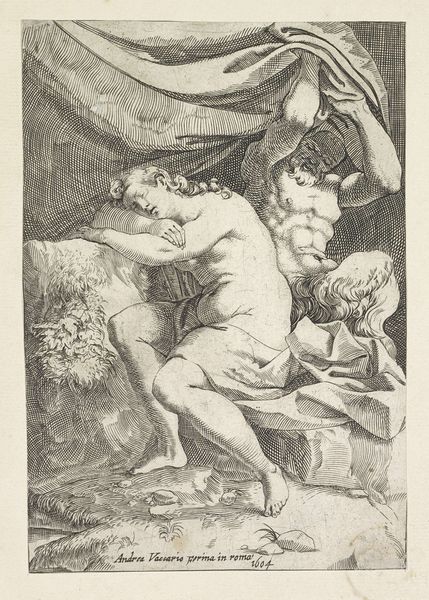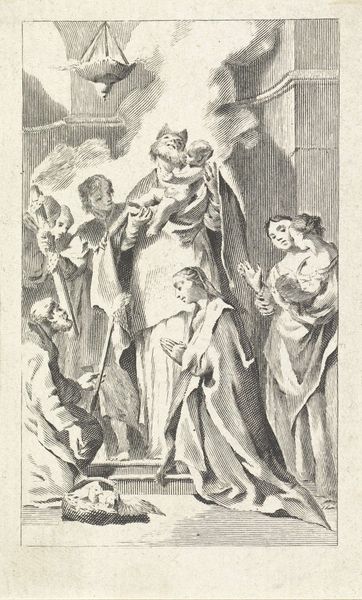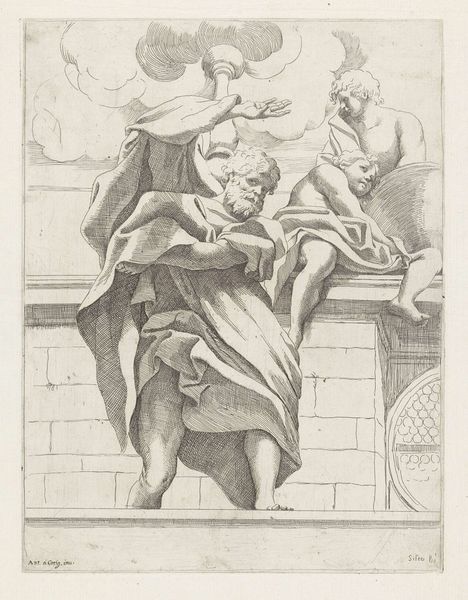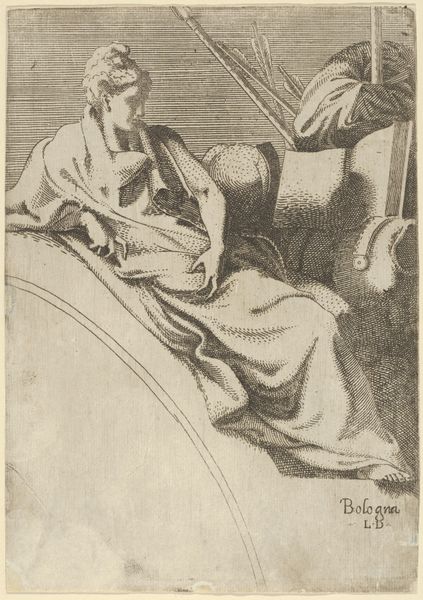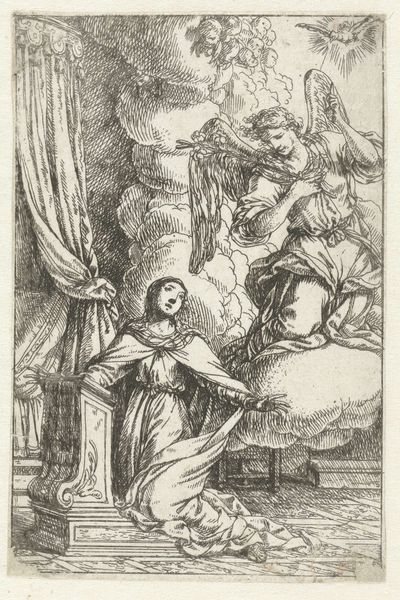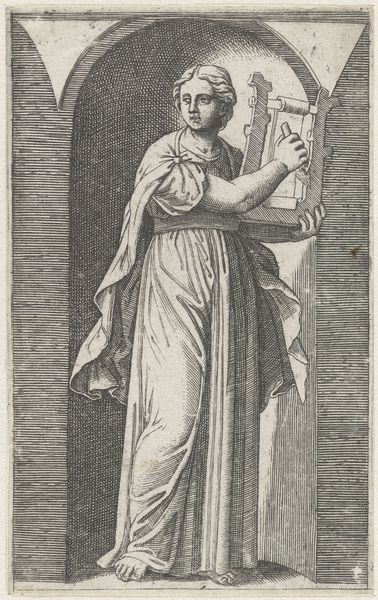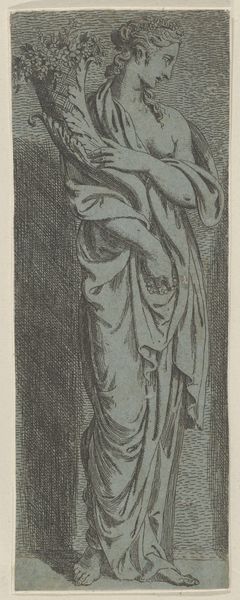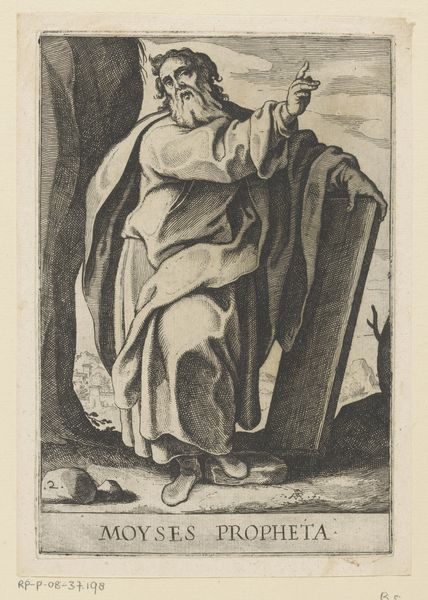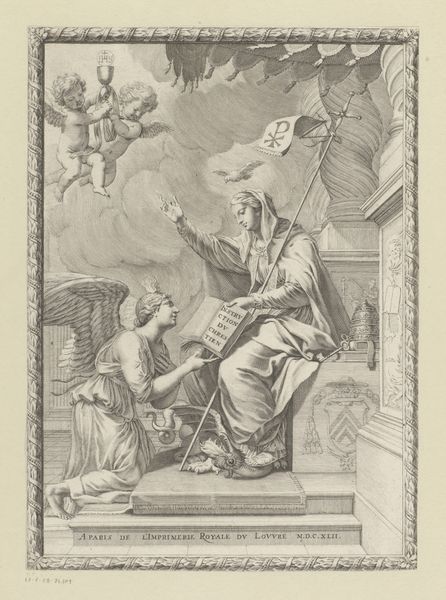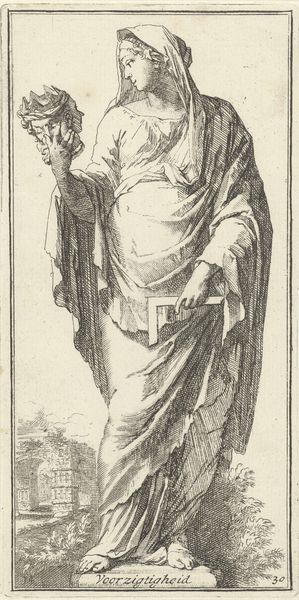
Melpomene, from "Twelve Muses and Goddesses" 1535 - 1550
0:00
0:00
drawing, print, engraving
#
drawing
# print
#
figuration
#
italian-renaissance
#
engraving
Dimensions: Sheet (trimmed): 7 15/16 × 5 7/8 in. (20.2 × 15 cm)
Copyright: Public Domain
Curator: This engraving, Melpomene, from "Twelve Muses and Goddesses", by Léon Davent, dates back to sometime between 1535 and 1550. Editor: Stark! The use of line creates such dramatic shadows. And what’s with the severed head hanging above? Gives me the shivers. Curator: The print showcases Melpomene, the muse of tragedy. Consider the production involved here—the design, the engraving tools, and the press all contributing to make art reproducible. Note the arc shape too, probably made for architectural decoration. Editor: The composition is indeed quite arresting. Observe how Davent used line and hatching to model form. The figure is compelling. Her gaze and gesture draw your eye upward. The textures are fascinating. The weight of that fabric, the curly hair… It's masterfully done. Curator: Consider Davent’s influences in Bologna, and what these classical images mean within the context of Renaissance workshops churning out these engravings, tapping into classical knowledge for consumption and display. Were the artists recognized for their skills or merely viewed as producers? Editor: That brings up the fascinating tension within the work. The classical form is present, yet it's filtered through Davent’s specific visual language, his application of line and tonal value to produce not just representation, but affect. There's something unnerving and visceral. Curator: Precisely. Think about how that visual language might’ve been tied into broader artistic production in printmaking across Europe—and how different social strata might consume it. And even that the material limitations of the engraving process were very strict at the time, and dictated aesthetics. Editor: Yes, those textures. What you're pointing out, it has implications beyond simple decoration; it speaks to a larger intellectual climate that valued both skill and knowledge of classical antiquity. It's as much an idea as it is a material object. The effect of the object relies heavily on both subject and means of making it. Curator: Ultimately, this work showcases how even reproducible art bears unique traces of labor, context, and cultural history. Editor: Indeed. And the way Davent chose to present Melpomene here tells us about a deliberate choice in representation. Compelling, thought-provoking—a real synthesis of concept and visual form.
Comments
No comments
Be the first to comment and join the conversation on the ultimate creative platform.

